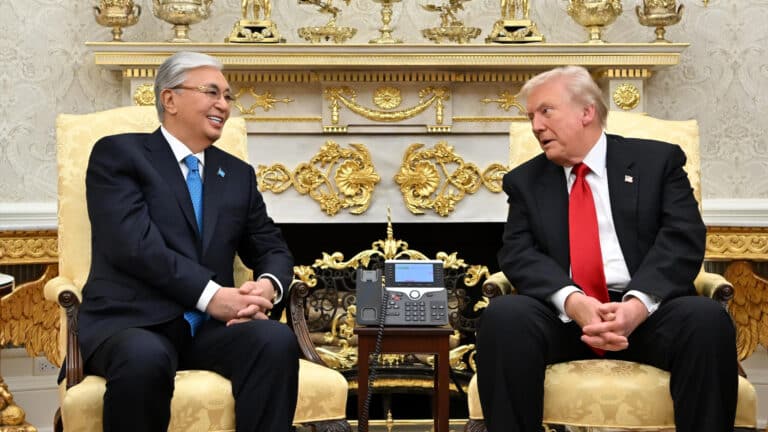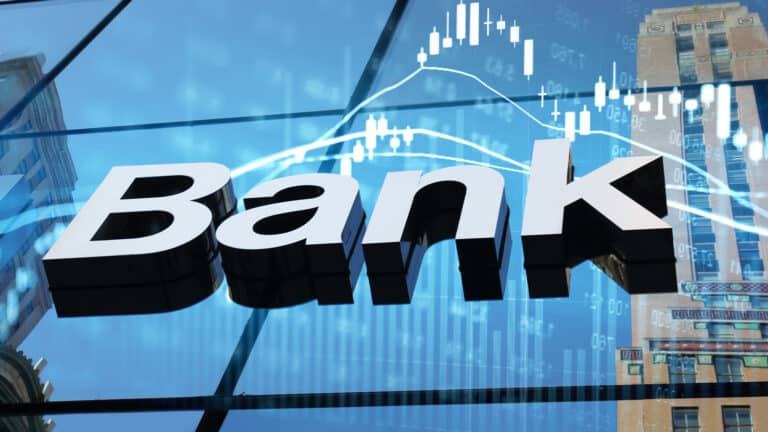
At the end of the year, the National Bank and the Agency for Regulation and Development of Financial Market (ARDFM) are going to analyze the efficacy of previously taken measures aimed at slowing down consumer lending in Kazakhstan and might go even further in strengthening legal requirements for borrowers, according to Akylzhan Baimagambetov, deputy chair of the National Bank.
«Our colleagues from the ARDFM have introduced this year a set of measures aimed at cooling down consumer lending a little bit. We plan to analyze them before the year ends to see how effective they are. If we consider them ineffective, we may introduce other counter-cycle methods combating the rapid increase of consumer lending alongside macroprudential instruments. Both we and the ARDFM believe that these measures are going to help us in cooling the consumer lending market,» the official said.
That being said, Baimagambetov assumed that previously-taken measures might be effective enough to reduce the consumer loan boom.
«Maybe those steps we’ve already taken will be enough to cool the consumer loan boom. The ARDFM has reduced the usury limit and effective yearly consumer loan rate by 10 percentage points. This measure may also affect the attractiveness of consumer loans,» he explained.
In August, the ARDFM lowered the maximum annual interest rate for unsecured bank loans from 56% to 46%, yet banks weren’t rushing to credit businesses, many entrepreneurs reported. In particular, Timur Turlov, CEO and majority shareholder of Freedom Holding Corp., is convinced that a 14.25% base rate hinders credit facility and business development. He made this statement during the First Kazakhstan Economic Freedom High-Level Conference in Astana. According to the financier, Kazakhstan’s National Bank has gotten more opportunities to reduce the base rate after the U.S. Federal Reserve System (the Fed) cut the rate by 50 basis points to 4.75%-5% for the first time since March 2020.
«We see that consumer lending is soaring, which is a source of concern for many other regulators across the globe. As Timur Turlov, who is representing the business community, noted, corporate lending drags behind consumer lending. As our data shows, consumer lending is growing at 30% per year or even more,» Baimagambetov said.
According to the deputy chairman, second-tier banks have three investing options. The first one is government lending, which means acquiring public securities.
«For you, as a banker, the following choices are available. You can credit the government. This is tax-free, riskless and profitable enough. The second option is consumer lending. It requires some investments in digitalization, but if you do so, you will get extremely high profits from each transaction. You can digitize just about anything in this area. Even with taxes in mind, the margins are very high here,» he explained.
The third option is to give loans to businesses. This choice is also taxed, besides bringing lower profits for banks.
«This is why we are now discussing with the government the possibility of introducing a tax on public securities. This measure may at least encourage banks to focus not only on the first two options but also on business loans,» the deputy chair suggested.
According to the National Bank’s financial stability report for 2023, second-tier banks’ retail loan portfolios grew by 26.7% last year. (In absolute terms, the growth amounted to around $6.5 billion.) Unsecured consumer loans accounted for the largest share of those loans (52.6%), followed by mortgages (31%), car loans (11%) and secured consumer loans (4%). Thus, unsecured consumer loans (55.6% and 49.1% in 2022) and car loans (22.1% and 3.9% in 2022) were the main contributors to the growth of the retail portfolio.
The report states that the consumer lending loan portfolio growth rate in 2023 was 28.6%, or around $4.2 billion in absolute expression, whereas in 2022 the indicator stood at 29.2%. It’s also worth noting an increase in applications for unsecured loans.
Baimagambetov also said that the National Bank expects base inflation to be at 5% by the end of 2025, although considering the utility rate hike, this figure is likely to increase.
The government will raise utility tariffs such as heating, electricity and other services, as the depreciation has reached the maximum level already causing technogenic accidents. The National Bank cannot react through a change in the base rate to any consequences of the price increase, Baimagembtov added.
«The utility bill inflation varied from 20% to 30% over the last year… The 2025 core inflation that doesn’t include regulated services will be close to 5%. But the headline inflation will be higher, and one of the reasons for this is these utility reforms,» he explained.
In 2025, inflation is bound to decline to 5.5%-7.5%, the National Bank forecasts. The surge of inflation followed Russia’s full-scale invasion of Ukraine in February 2022. In 2021, inflation in Kazakhstan was at 8.4% and then soared up to 20.3% in 2022.
«We saw inflation started to grow in 2022, right after the war between Russia and Ukraine broke out… We witnessed a new crisis in Kazakhstan appear just after the pandemic ended. We had obtained a lot of imports from Russia as the established logistic chains had been eliminated by the virus. We just started to revive them just as the war once again broke everything. We had to redirect our trade routes and breathe more life into the Trans-Caspian International Transport Route,» the deputy chair expressed.
Adjustment of the logistic routes has led to an inflation increase.
«As a result, inflation peaked at 21-plus percent in early 2022… Now we can see that it has decreased by more than 2.5 times, so in August it was 8.4%. But it’s still far from our target. We need to reach 5%,» Baimagambetov noted.
According to him, the National Bank is trying to tighten the monetary policy through traditional approaches.
«Perhaps the lesson we’ve learned from this crisis is that we must support our government in its efforts to achieve economic advancement. But we also have to maintain the monetary discipline since these additional funds provoked the inflation rise and with certain supply limitations, we can’t be just pumping up the demand. It just makes an inflation increase, which means money can’t adjust the case as it’s not a resource,» he explained.
He also highlighted that the regulator has terminated most of its state support programs.
«We are still in charge of one — affordable housing. However, the budget of this program is very limited. We believe that such programs should be more focused and targeted and should be financed from fiscal resources,» he said.
Baimagambetov also noted that Kazakhstan uses various instruments, including macroprudential, to reduce the dollarization of the economy.
«We reached the peak of deposit dollarization 10 years ago; there were from 70% to 80% of them. Now we may observe historically low levels in 20 years: only 21% of deposits in the country are in a foreign currency. We have some soft fixed rates available for consumer deposits, but only for private entities. In addition, we have previously implemented some measures that prohibit unhedged borrowing in foreign currencies. As a result, we have achieved 100% of mortgages in a local currency, while very few loans are in foreign currencies, held not by individuals but by legal entities,» he said.
Therefore, acting Chair of the National Bank of Georgia Natela Turnava said that the monetary authorities of the country have also advanced in dedollarization of the economy.
«In 2015, when we started the dedollarization policy, almost 70% of loans and 75% of deposits were in foreign currencies, mostly in dollars. As of today, the number of foreign currency deposits has roughly halved, making it somewhere in the range of 46% to 49%, while the foreign currency loan portfolio has come down to 45%,» she said.
According to her, Georgia’s inflation rate has been well below the target of 3% and even better than 2% for the past 16 months, whereas the economic growth rate is expected to reach 9.6% in 2024 in contrast to double-digit unit growth earlier.
«We have become the financial sector hub. We have to learn a lot, and we are also learning from our colleagues in Kazakhstan, who have successful practices of developing the fintech area,» she said.
Turnava noted that in recent years, central bank governors in developing countries have managed to react to inflation shocks quicker than their colleagues in developed countries.













